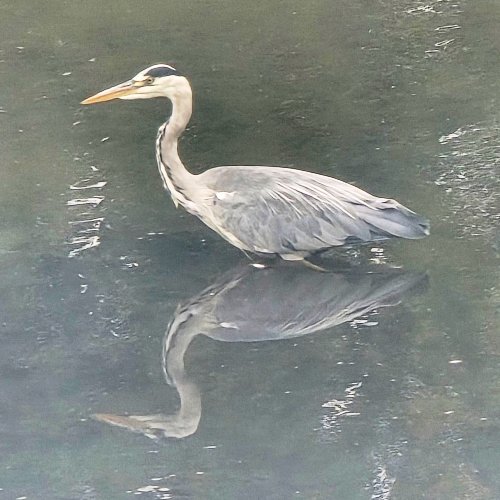History of... Grey Heron
Name:
Grey Heron
Scientific Name:
Ardea cinerea
Family:
Ardeidae
Conservation Status:
Least Concern
Habitation:
Still-water habitats such as floodplains, ponds and lakes
Discovery:
There are fossil showing herons existed around 60 million years ago. The mention of Grey Herons first appeared in the English language around 1300
Grey herons are a large bird, standing up to 100 cm (40 in) tall and measuring 84 to 102 cm (33 to 40 in) long with a 155 to 195 cm (61 to 77 in) wingspan.
All herons can retract their necks by folding them into a tight S-shape, due to the modified shape of the neck vertebrae. Unlike most other long necked birds, the heron also folds its neck during flight.
The legs are long and strong, and are unfeathered from the lower part of the tibia. In flight, the legs and feet are generally held in a horizontal position, pointing backwards. Toes are long and thin, with three pointing forwards and one backwards.
The bill is long and harpoon like. It is wider in the grey heron than some of the other species. Herons' bills and other bare parts of the body are usually yellow, black, or brown, although this can vary during the breeding season. The wings are broad and long. The feathers of the herons are soft and the plumage is usually grey and white.
Grey herons usually live for around 5 years, although there is a recorded heron that lived for 23 years.
They exist on all continents except Antarctica and are present in most habitats except the coldest extremes of the Arctic, extremely high mountains, and the driest deserts. Almost all species are associated with water; they are essentially non-swimming water birds that feed on the margins of lakes (20 to 50 metres from the shore), rivers, swamps, ponds, and the sea.
Their diet includes a variety of fish, reptiles, amphibians, crustaceans, molluscs, and aquatic insects. They also take larger prey, including birds, bird eggs and rodents.
The most common hunting technique is for the bird to sit motionless on the edge or stand in shallow water and wait until prey comes within range. Birds may either do this from an upright posture, giving them a wider field of view for seeing prey, or from a crouched position. Once the prey has been seen, the head is moved from side to side to calculate the position of the prey in the water and compensate for refraction, then the bill is used to spear the prey.
The Grey Heron are mostly colonial. Colonies may contain several species, as well as other species of water birds.
Males arrive first and begin to build the nest on or near water or tops of trees, where they start to display to attract females. Once paired, they continue to build the nest together.
They breed once a year from late February to June and can have 3 to 7 eggs. The eggs are usually a dull pale greenish blue.
The incubation period of the eggs are 25 to 28 days and chicks will start fledging 50 to 55 days later.
Photograph: Ian Stephens 


